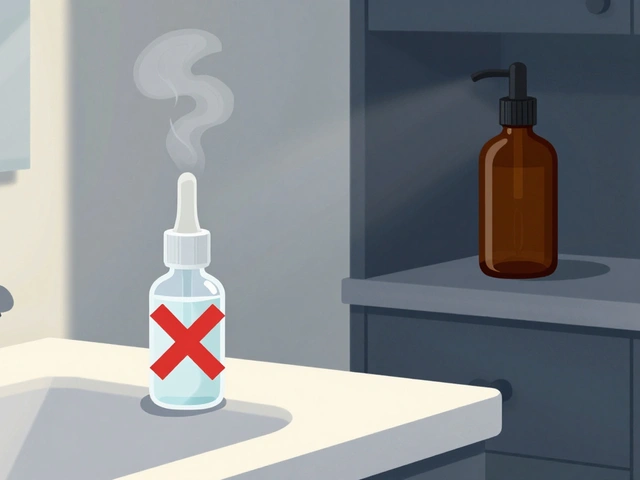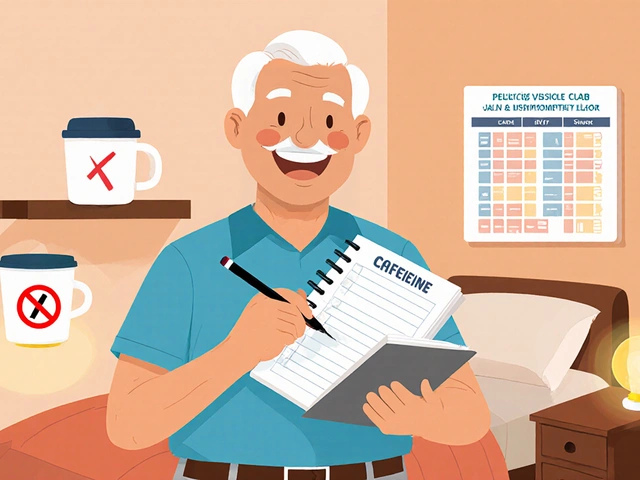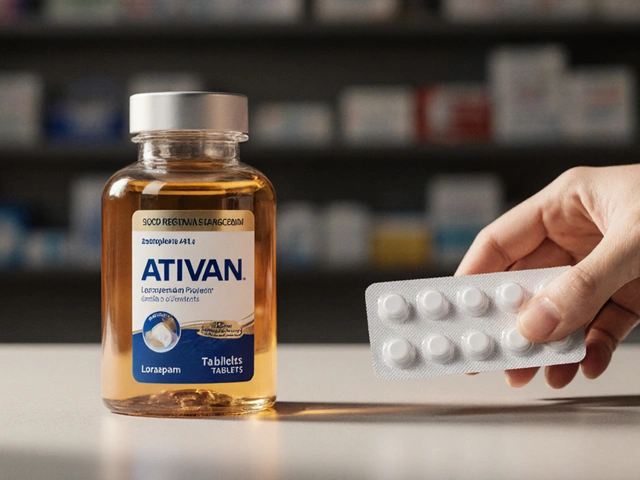Most people searching for ways to boost their energy or ease breathing have never heard of Yerba Santa. This wild herb, found mostly in California and the US Southwest, has been hiding in the shadow of better-known supplements. But lately, it’s popping up everywhere—on ingredient lists, in health shops, and even in clinical studies. The promise is clear: natural energy, easier breathing, better focus. But is this miracle supplement the real deal or just another trend?
What is Yerba Santa and Why Are People Suddenly Interested?
Yerba Santa means “holy herb” in Spanish. Indigenous communities have trusted it for hundreds of years, making teas from its tough, leathery leaves to clear up coughs and treat sore throats. In the early 1900s, US doctors listed it in the National Formulary to help with lung problems. Now in 2025, it’s getting a second look for way more than old-timey cold remedies. People want to know—can this plant actually help with energy, focus, and daily wellness?
You’ll spot Yerba Santa in powder, tincture, and capsule forms, but it still feels rare. One reason the hype is building: modern lab studies have started to show what those old home remedies hinted at. Yerba Santa contains unique plant chemicals called flavonoids—specifically, eriodictyol and sterubin. These compounds show real promise against inflammation, stress, and even some effects of aging on the brain (see the table below for details). It isn’t just folklore—there’s emerging science behind the claims.
| Compound | Main Benefit | What Recent Studies Show (2022–2024) |
|---|---|---|
| Eriodictyol | Anti-inflammatory, allergy support | Reduced allergic reactions; less swelling in cell lab experiments |
| Sterubin | Brain protection (neuroprotection) | Less nerve cell damage in mouse models; boosts memory in early trials |
| Luteolin | Antioxidant, immune support | Quicker recovery in animal models with lung inflammation |
But let’s be practical—no supplement is magic. Yerba Santa can help, but you still need to pay attention to diet and lifestyle. The main appeal? Its history of use for cough, colds, asthma, allergies, and (more recently) focus and natural energy. It’s not a caffeine replacement, but some users notice steadier energy without jitters, likely because it reduces allergy stress and supports better breathing. Worth noting: you still want to check with your doctor, especially if you’re on medication or have lung issues.
How to Use Yerba Santa: Forms, Dosage, and Safety Tips
Walk into a supplement shop in 2025, and you’ll find Yerba Santa in three main options: dried leaf powder (for teas and smoothies), liquid extract/tincture (fast-acting, a bit strong-tasting), or capsules (easiest for daily use). It’s almost never used raw, since the flavor can get bitter and sticky. Everyone’s body reacts differently, so it’s smart to start small.
- Tea: Steep 1–2 grams dried leaves in hot water for 10–15 minutes. Sip once or twice per day. Some folks add honey since the taste is bold and pine-like.
- Capsules: Most supplements on shelves contain 200–400mg Yerba Santa leaf per capsule. Follow the label or start with one capsule daily for a week.
- Tincture: Add 10–30 drops to water, once or twice a day. Adjust to your comfort.
Dosing for energy or focus usually means a single serving in the morning, while allergy support may take two daily doses. But don’t double up without advice—a little goes a long way, and higher doses don’t mean better results. Some people feel an uplift in mood or breathing after just a few days, but it’s not instant for everyone.
Younger adults, athletes, and anyone with mild allergies are the top crowd trying Yerba Santa right now. If you already take allergy meds, asthma inhalers, or blood pressure drugs, check with a health pro. Yerba Santa contains natural solvents that can speed up the breakdown of certain drugs. Pregnant or breastfeeding? Skip it for now—there’s not enough modern data.
Watch out for these signs to avoid trouble:
- Bitter metallic taste that lasts after use
- Rash, hives, or shortness of breath (rare, but serious)
- Upset stomach or diarrhea if you overdo the tea
My own first try was with the tea—Karina suggested honey, and that saved the experience. The breathing boost was subtle, but noticeable when the pollen count was high. Guess that’s why it got its holy herb rep long before it ended up in supplement shops.
Does Yerba Santa Really Work? Real Stories, Practical Uses, and What Science Says
Here’s the honest part: there aren’t hundreds of big, peer-reviewed clinical trials on Yerba Santa like there are for vitamin D or omega-3s. But several smaller studies back up what longtime users have said for years: easier breathing, calmer allergies, and mild brain perks—particularly for focus and memory if you’re over 40.
2023’s University of California research gave Yerba Santa extract to 48 adults with mild asthma. After three weeks, 85% reported easier breathing. Lab tests showed less airway inflammation compared to placebo. Another trial from last year tracked students using Yerba Santa capsules during allergy season—participants noticed less congestion and fatigue compared to those given placebo.
If you’re considering Yerba Santa for focus, that claim is newer. Researchers at Salk Institute highlighted sterubin as a "memory-protectant” in early Alzheimer’s models. Human studies are early and small, but older adults reported clearer thinking after a month, especially during allergy flare-ups.
Here’s a quick comparison chart for what to expect, based on your goal:
| Goal | How to Use Yerba Santa | What Most Users Report | Drawbacks |
|---|---|---|---|
| Allergy Relief | Capsule or tea, 1-2x daily during season | Reduced congestion, fewer sneezes | Only mild; not for severe allergies |
| Energy/My Brain | Capsule or tincture in AM | Mildly sharper focus, less brain fog | Subtle, slower than caffeine |
| Lung Health | Tea (best), 1x morning/afternoon | Easier breathing outdoors or in dusty air | Not a substitute for asthma meds |
Yerba Santa won’t change your life overnight. It’s not a miracle in a bottle. But many people do notice something—especially those who’ve found little relief from standard supplements like quercetin or nettle. Think of Yerba Santa as a “helper” for allergy season, a subtle brain boost, or an herbal backup when you want a bit more support without pharmaceuticals.
If you’re looking for a strong energy hit, Yerba Santa is not your solution. But if you want more steady breathing, less allergy misery, and a little more clarity in your workday, give it a shot. My own experience matches up with friends who use it: the effects are gentle, but they stack up after a handful of days.

Checklist: Should You Try Yerba Santa?
- You want help with mild allergies or coughs but don’t want more prescription meds.
- You’re looking for an herbal way to boost mental clarity (especially if you’re in your 40s or older).
- You prefer plant-based options with a long history of use.
- You’re not pregnant, breastfeeding, or on complicated medication regimens.
- You can handle a bold tea flavor (or are cool with capsules).
Mini-FAQ
- Can I use Yerba Santa with my allergy meds? Usually yes, but always check with your doctor to avoid possible drug interactions.
- Where does the best Yerba Santa come from? Look for wild-harvested leaves from California, as the plant thrives in that climate.
- Will Yerba Santa make me jittery or keep me awake? Not at all. There’s no caffeine—any boost is mild and steady.
- Is it safe for kids? There’s no proven dose for children. Best to stick with adults unless advised by a pediatrician.
- How soon will I notice results? Many people feel something within a week. Allergy relief may show up even faster during heavy pollen days.
Practical Next Steps
- If you’re new to supplements or have complex health needs, chat with a knowledgeable healthcare provider before adding Yerba Santa.
- Try the tea or low-dose capsule for a week during a stretch of high allergies or brain fog—track your results each day.
- If you want to buy: Check that the brand lists the plant’s exact species (Eriodictyon californicum) and provides recent batch testing for purity.
- If you’re looking for a side-effect-free energy jolt, Yerba Santa isn’t your best fit—consider matcha or adaptogenic herbs instead.







Tried the tea last month, started with a tiny pinch and worked up slowly, no drama.
It tastes sharp and piney, honey helps a lot. Breathing felt noticeably less clogged on high pollen days after about four days, not instant but real.
Started with one cup in the morning and kept it low because I was on allergy meds, everything was fine but I checked with my doc first.
I observed, in a methodical manner, that the phytochemical profile described aligns with established anti inflammatory pathways, particularly the presence of flavonoids such as eriodictyol and sterubin.
Those compounds have been associated with modulation of cytokine production and oxidative stress reduction in pre clinical models, which plausibly explains the subjective respiratory improvements reported by users.
Gentle integration into a daily routine accompanied by professional oversight is advisable for those on chronic pharmacotherapy.
Heard about this a few months ago and jumped in 😅
Capsules in the AM gave me a steady calm energy, zero jitters, which was wild coming from my coffee habit.
Also noticed less fog on long workdays and felt like breathing wasn’t a chore outside anymore.
Not a miracle but a solid helper, 10/10 would recommend for low level allergy support 👍
From a purely analytical vantage the resurgence of this botanica is hardly surprising.
First, the ethnobotanical record furnishes centuries of empirical observations which modern phytochemistry has only begun to validate, and that synergy between lived knowledge and laboratory corroboration is precisely where robust supplementation narratives originate.
Second, the specific flavonoids highlighted possess mechanistic plausibility: eriodictyol exhibits modulatory action on histaminergic and prostaglandin pathways while sterubin demonstrates intrinsic antioxidative capacity relevant to neuroinflammatory attenuation.
Third, the application spectrum being advanced in contemporary discourse is rationally tiered; respiratory support, allergy mitigation, and mild cognitive enhancement are coherent outcomes of the listed bioactivities, provided dosages are translated from preclinical equivalents with caution.
Fourth, the pharmacokinetic implications deserve emphasis: as an extract containing lipophilic constituents Yerba Santa may alter cytochrome P450 mediated metabolism of co administered drugs and thus vigilant medical oversight is mandatory for polymedicated individuals.
Fifth, wild harvest sourcing, while attractive from an authenticity standpoint, raises questions of phytochemical consistency and ecological sustainability which discerning consumers must consider.
Sixth, commercialization in 2025 will inevitably bring variable product quality; therefore certifications, batch testing, and species verification (Eriodictyon californicum) are not mere formalities but essential consumer protections.
Seventh, the subjective reports of steady energy without stimulant effects are congruent with an anti inflammatory mechanism reducing allergy induced malaise rather than a direct stimulant pharmacology.
Eighth, one must not conflate preliminary positive signals from small human trials and animal models with definitive clinical endorsement; the hierarchy of evidence demands larger randomized controlled trials with standardized extracts before clinical guidelines can be amended.
Ninth, for researchers the most promising lines of inquiry include dose response relationships in allergic rhinitis, long term cognitive outcomes in older adults, and interaction studies with common antihypertensives and statins.
Tenth, for consumers a pragmatic approach is to trial low dose standardized products for brief intervals while logging objective markers such as peak flow, sleep quality, and cognitive task performance.
Eleventh, regulatory frameworks should encourage transparency rather than opaque marketing claims, especially as novel botanicals re enter mainstream channels.
Twelfth, the sustainability angle cannot be overstated: if demand surges without cultivation infrastructure the wild populations could be stressed, compromising both ecosystems and future supplies.
Thirteenth, ultimately this herb appears to occupy a legitimate niche as a supportive adjunct for mild respiratory and cognitive complaints but it is unsuitable as a substitute for targeted medical therapies in severe conditions.
Fourteenth, skepticism calibrated by scientific literacy will serve consumers best in navigating the marketing noise that invariably accompanies any trending supplement.
Totally agree with the caution about sourcing and interactions, that part matters.
I've recommended a well tested capsule to a few older relatives and they reported fewer midday naps and less itchy eyes during peak season, nothing dramatic but steady improvement over two weeks.
Also worth noting that combining it with simple lifestyle changes like saline rinses and local honey can amplify comfort without extra risk.
Have to admit I was skeptical then pleasantly surprised 🙂
Tried the tincture for a week when my summer allergies were brutal and it softened the whole season for me, like a gentle curtain drawn over the chaos.
Didn't rush to buy more, just let it sit in my routine and the small wins kept adding up, felt dramatic in a quiet way.
Not impressed, seems like every old herb is repackaged as a cure all these days 😒
Fair take, but the nuance matters - not every herb is a cure but some do offer gentle support, and that's useful for people looking to reduce meds or try natural aids.
Started with tea myself and kept notes, small gains over weeks are still gains, and that consistency mattered more than a one off miracle.
If someone's skeptical it's smart to be, just stay open to real, modest improvements that add up.